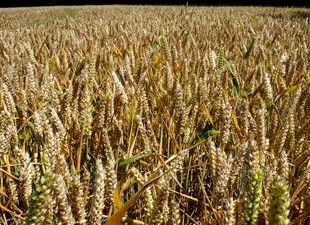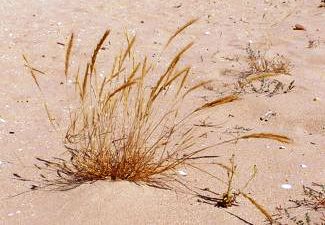
Global efforts to adapt staple foods like rice, wheat and potato to climate change have been given a major boost as new research shows the whereabouts of their wild cousins – which could hold beneficial qualities to help improve crops and make them more productive and resilient.
The analysis assesses 29* of the world’s most important food crops and reveals severe threats to just over half of their wild relatives as they are not adequately saved in gene-banks and not available to researchers and plant breeders for crop improvement.
Climate change is predicted to cause the substantial decline of agricultural production in the coming decades, and together with rising food prices, this will hit the poorest first and hardest. This global analysis forms part of a larger partnership to collect and conserve the wild relatives of the world’s major food crops.
The initiative, led by the Global Crop Diversity Trust (Crop Trust) in partnership with Kew’s Millennium Seed Bank and in collaboration with national and international agricultural research institutes, is the largest ever global effort to conserve crop wild relatives. These wild plants contain essential traits that could be bred into crops to make them more hardy and versatile in the face of dramatically different climates expected in the coming years. The Norwegian Government is providing funding for this ten-year initiative.
The three-year study, carried out by the International Center for Tropical Agriculture (CIAT) and managed by the Crop Trust in partnership with Kew’s Millennium Seed Bank, is the first of its kind to assess, on a global scale, the conservation gaps for crop wild relatives across the most significant crop gene pools. The University of Birmingham researched and developed a comprehensive inventory of these wild crop cousins, providing a foundation for the gap analysis.
“This is a major step forward in the global effort to make our food crops more resilient to the effects of climate change,” says Andy Jarvis, leader of CIAT’s Decision and Policy Analysis Research Area, which conducted the research. “Crop wild relatives are a potential treasure trove of useful characteristics that scientists can put to good use for making agriculture more resilient and improving the livelihoods of millions of people.”
Jane Toll, Project Manager at the Global Crop Diversity Trust, adds, “This study has thrown up some surprises. Crop wild relatives in some areas in Australia, Europe and the USA need to be collected just as much as those in regions of Africa, Asia and South America. We want to ensure access to the wild genes that could boost the crops relied on by some of the world’s poorest people. These wild genes have the potential to increase yields, pest resistance and tolerance to extreme temperatures.”
Dr. Ruth Eastwood, Crop Wild Relative Project Coordinator from Kew’s Millennium Seed Bank, says, “Adapting agriculture to climate change is one of the most urgent challenges of our time. Crop wild relatives are already being used to make improvements to our food crops right now and are extremely valuable economically as well, but they are under-utilized. In a separate study by PwC, commissioned by Kew’s Millennium Seed Bank, it is estimated that the monetary value to agriculture of improved productivity or stress resistance traits that crop wild relatives offer is currently $ 42 bn with the potential to be $ 120 bn in the future.”
Facts and Figures

- Of the 29 priority crop gene pools targeted, the project focused on a set of 450 crop wild relatives
- Gap analysis results show that 54% of the crop wild relatives on the target list are high priority for collection as they have not been collected before or existing collections do not adequately represent their full geographic distribution
- The top five crops most at risk are eggplant, potato, apple, sunflower and carrot, as a large number of their crop wild relatives are high priority species for collection
- Important cereal crops in much of Africa, including sorghum and finger millet, are also at high risk and the collection of their wild relatives is being prioritized
- Countries with the richest number of priority crop wild relatives include: Australia, Bolivia, China, Cyprus, Ecuador, Ethiopia, India, Italy, Kenya, Mexico, Mozambique, Peru, Portugal, South Africa, Turkey and USA. Although these countries are mostly located in the traditionally recognized centres of high wild crop diversity, notable exceptions are USA, Australia and the European countries. For example, northern Australia has been identified as rich in the wild relatives of African staple sorghum
- This highlights the important role that the wild plant resources in industrialized countries have to contribute to food security in developing nations. It is expected that there will be collecting in Italy and Portugal this summer, carried out by scientists from Kew’s Millennium Seed Bank and local partners


















